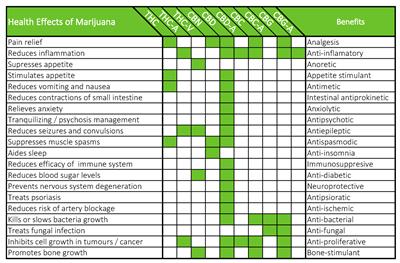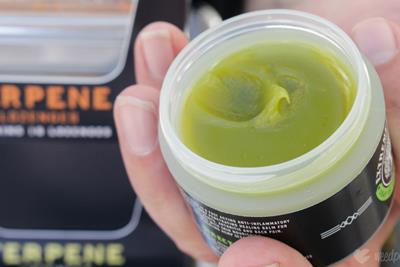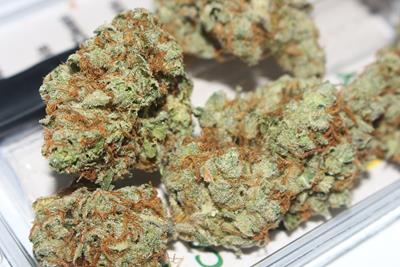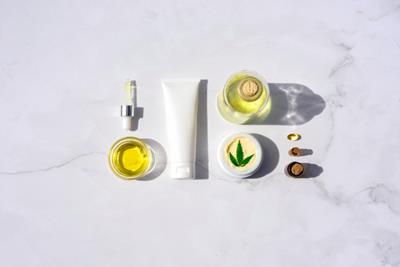
Friday November 12, 2021
By Trevor Ross
Reviewed By Joshua Hooten, M.D. on Monday February 7, 2022
 Health/Science
Health/Science
New cannabis users are often curious about topical creams, particularly for muscle aches and arthritis, but they may wonder what, if any, intoxicating effects they should expect. It’s a fair question — how does the active ingredient work if it doesn’t also get the user high? And if it doesn’t get you high, how is it working? The answer requires some explanation of how cannabis works in the body at all, and how it works differently being absorbed through the skin (as opposed to being eaten or inhaled).
Do cannabis topicals get you high? For years, the answer was a firm and easy “no,” but at least one cannabis manufacturer has taken this limitation as a challenge, and produced a transdermal cream that can, in fact, get you high.
In this article, we review how cannabis interacts with the body, how topicals work, and how they differ from transdermals (which do get the user high).
How Cannabis Topicals Work
There are several active ingredients in cannabis, aptly called “cannabinoids,” and these cannabinoids, like THC, bind with cannabinoid receptors (CB receptors) at the cellular level. Our bodies have these receptors even if we don’t use cannabis because our bodies produce similar chemicals (endocannabinoids) like anandamide, that also bind with these receptors. CB1 receptors are localized primarily in the brain and central nervous system, and CB2 receptors are found throughout the body, mostly on immune cells.
When cannabis is smoked or vaporized, THC enters the bloodstream where it crosses the blood-brain barrier and enters the brain. Once THC is in your brain it finds a concentration of CB receptors to bind with, which then carry effects outward through your central nervous system.
Conversely, when a cannabis topical is applied to the skin, It does not get into the blood stream. Those cannabinoids are only absorbed into the epidermis (the outer layer of skin). They need to get into the dermis (the deeper layer of living tissue just beneath the surface of the skin, containing small capillaries) to be absorbed into the blood stream. But, most cannabinoids are chemically not absorbable past this layer and cannot get into the dermis without a solvent (another chemical, which helps carries them into the dermal layer) or being specially formulated to absorb deeper.

Think of it like this: Your skin works by keeping you from absorbing bigger or potentially harmful chemicals from the environment, and cannabinoids like THC and CBD are blocked from being absorbed through the skin, into your body. There is a special layer of the epidermis that prevents this. It is called the Stratum Basale, and it is a thick layer that keeps your fluids in your body and chemicals outside your body.
Luckily, There are immune cells in the epidermis (the outer layer of skin) that have CB2 receptors, and when these CB2 receptors receive a compound like CBD , it “tells” the cell to reduce inflammation and to chill out with the pain messages it may be sending to the brain. This is how you get local pain relief from a topical. However, a topical cream or lotion ends here, and will not be absorbed across the dermal layer and into the bloodstream.
This makes topicals the perfect solution for users who want localized relief with no cerebral side effects. Cannabis topicals are a natural anti-inflammatory, with a better safety profile than NSAIDS, like ibuprofen and are designed to only work at the site of application. Topicals cannot offer full-body relief because they cannot access the full body. For the same reason, they cannot get you high. It is possible to get high via the skin, but requires a different product: the transdermal.
Topical vs Transdermal
Where topicals are only absorbed into the epidermis (which means “outside the dermis”), a transdermal uses solvents and special formulations to help cannabinoids cross into the dermis and enter the bloodstream. Once in the bloodstream, cannabinoids are circulated throughout the body and will activate CB receptors in the brain, nervous system and immune cells throughout the body.
Transdermals are usually patches (similar to nicotine patches cigarette smokers may be familiar with). The patch contains a jelly or cream infused with a given chemical (in this case, THC) which is absorbed over time through the skin.

Because they absorb into the body, Transdermals treat more than a specific site, and the effects will be the same regardless of where you place it. Most of them are also designed to release THC over time, so they kick in later (up to two hours later), last longer (up to a day, say some users), and are generally a little less intense.
Transdermals are not always patches. In fact, in 2019, the brand management company Cannabiniers patented the first transdermal lotion for recreational use. BASKiN GLOW offers a THC:CBD blend that is absorbed into the bloodstream and promises a quicker onset than edibles. A big advancement from most patches.
Conclusion
If the difference between “topical” and “transdermal” seems confusing, remember that the prefix “trans-” means across or beyond. Much as a transatlantic flight goes across the Atlantic Ocean, a trans-(across) dermal (dermis) product is designed to cross the dermal layer of skin and enter the bloodstream. Topicals are meant for localized relief, and will not affect the whole body. If a transdermal contains THC, it will get you high. A topical will not.
As of this publication, BASKiN GLOW is the only recreational, transdermal lotion PotGuide is aware of, so the chances of misusing a cream or lotion and accidentally getting high are very low. Anyone still concerned can simply ask their budtender to confirm the difference between a topical and a transdermal.
One catch with transdermals is that the integrity of the phenotype can be compromised during manufacturing. Any users relying on specific strains for relief should be cautioned when switching consumption methods: the holistic “entourage effect” of terpenes and flavonoids may be lost from an isolate or concentrate, resulting in different or incomplete effects. They’ll still get you high, it just may not be the kind of high you’re looking for.
Cannabis topicals are great for athletes with muscle aches, those suffering from arthritis, and almost anyone else reaching for BENGAY, IcyHot, or similar products. They also offer a healthier alternative to NSAIDS like Advil, but don’t worry: cannabis topicals will not get you high.
Frequently Asked Questions
What are cannabis topicals used for?
Cannabis topicals are used as a localized anti-inflammatory and pain reliever for muscle and joint pain. Some people also use them for itchy bug bites.
Can all cannabis topicals get you high?
No. In fact, only a very few “transdermal creams” can get you high. The vast majority of topical cannabis creams are only absorbed as far as the flesh they’re applied to, relieving symptoms there, and never entering the blood stream.
What type of cannabis topicals are non-psychoactive?
All cannabis topicals are non-psychoactive because their active ingredients cannot be absorbed any deeper than the skin, keeping the cannabinoids out of the blood stream. However, these creams and lotions should not be confused with cannabis transdermals, which are designed to deliver THC into the bloodstream and to the brain, where they will get the user high.
How do cannabis topicals work?
Cannabis topicals carry cannabinoids like THC or CBD as far as the deepest layer of the epidermis. Here, they find Immune cells with CB2 receptors, which they bind with to offer local relief from pain and inflammation. Cannabinoids applied via topical cream or lotion remain at the site of application for localized relief, and cannot enter the larger bloodstream to take effect anywhere else.
Do you have a topical you recommend? Let us know what and where in the comments!
Photo Credit: WeedPornDaily (license)







